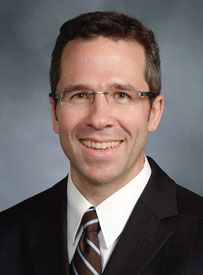Publication
Article
Patients With Lung Cancer Often Receive Excess Radiation
Author(s):
Patients undergoing lung resection for NSCLC are frequently exposed to a higher dose of radiation than that which has been deemed safe for healthcare workers.

Brendon M. Stiles, MD
Patients undergoing lung resection for non—small cell lung cancer (NSCLC) are frequently exposed to a higher dose of radiation than that which has been deemed safe for healthcare workers, a recent study has concluded.
Brendon M. Stiles, MD, with Weill Medical College of Cornell University in New York City, and colleagues estimated the cumulative effective doses of radiation in 94 consecutive NSCLC patients who underwent surgical resection over a 7-month period in 2006 and were followed for at least 2 years.
Exposure to low-dose ionizing radiation from medical imaging procedures has been implicated in the development of solid tumors and leukemia. Given that the available data suggest an increased lifetime risk of malignancy of 1.0% per 100 millisieverts (mSv), healthcare workers who are repeatedly exposed to radiation are usually monitored in order to ensure that their cumulative effective radiation dose does not exceed 50 mSv in any given year or 100 mSv over a 3-year period.
Patients who undergo surgery for newly diagnosed NSCLC typically undergo several diagnostic imaging procedures; however, the radiation dose from these procedures is usually not monitored.
In their study, the investigators counted all imaging procedures performed from 1 year before the resection until 2 years after the resection for each patient. Estimates of effective doses in mSv were obtained from the published literature and from institutional protocols and records.
During the 3-year period, patients had 1958 radiologic studies. The most common procedure was a chest x-ray, with an average of 12.6 per patient. The study population also received 4.23 computed tomography (CT) scans per patient, 2.24 positron emission tomography (PET)-CT scans per patient, and 0.70 CT-guided biopsies per patient.
Patients had a median exposure of 84.0 mSv over 3 years. The researchers noted that prediction models show that this level of exposure may increase the lifetime attributable risk of developing a radiation-induced cancer by 0.84%. The highest median dose was in the preoperative year (34.1 mSv).
Two-thirds of patients received more than 50 mSv in any given year, and 19% received more than 100 mSv. For the entire 3-year period, the cumulative exposure exceeded 100 mSv in 43.6% of patients. Most of the radiation was from CT or PET-CT scans.
A history of a prior malignancy, postoperative complications, and enrollment in a PET-CT surveillance program predicted exposure greater than 100 mSv.
Stiles and colleagues acknowledged that their team probably “failed to capture numerous imaging procedures performed on the cohort of patients.” Because their facility was a tertiary referral center, several patients had their imaging studies at outside imaging facilities or institutions, and these studies would not have been documented on the electronic medical records.
The authors said that strategies should be developed to reduce radiation exposure during the preoperative workup and postoperative period. It is also important “to document and tally cumulative radiation exposure in patients expected to be cured of their NSCLC so that the risk of radiation-induced malignancies can be calculated and taken into clinical consideration,” they added.
Stiles BM, Mirza F, Towe CW, et al. Cumulative radiation dose from medical imaging procedures in patients undergoing resection for lung cancer [published online ahead of print July 13, 2011]. Ann Thoracic Surg. 2011;92(4):1170-1179.










